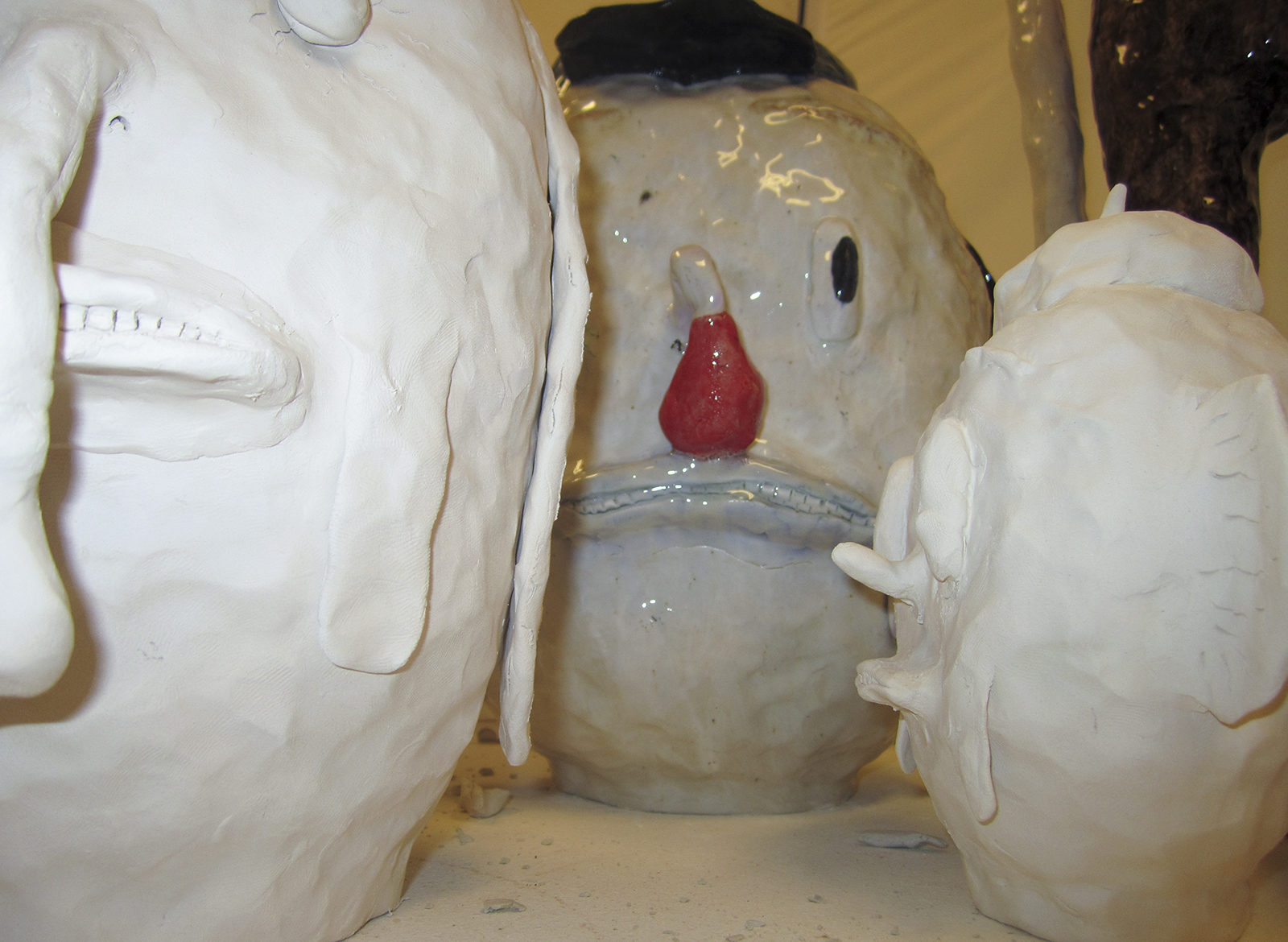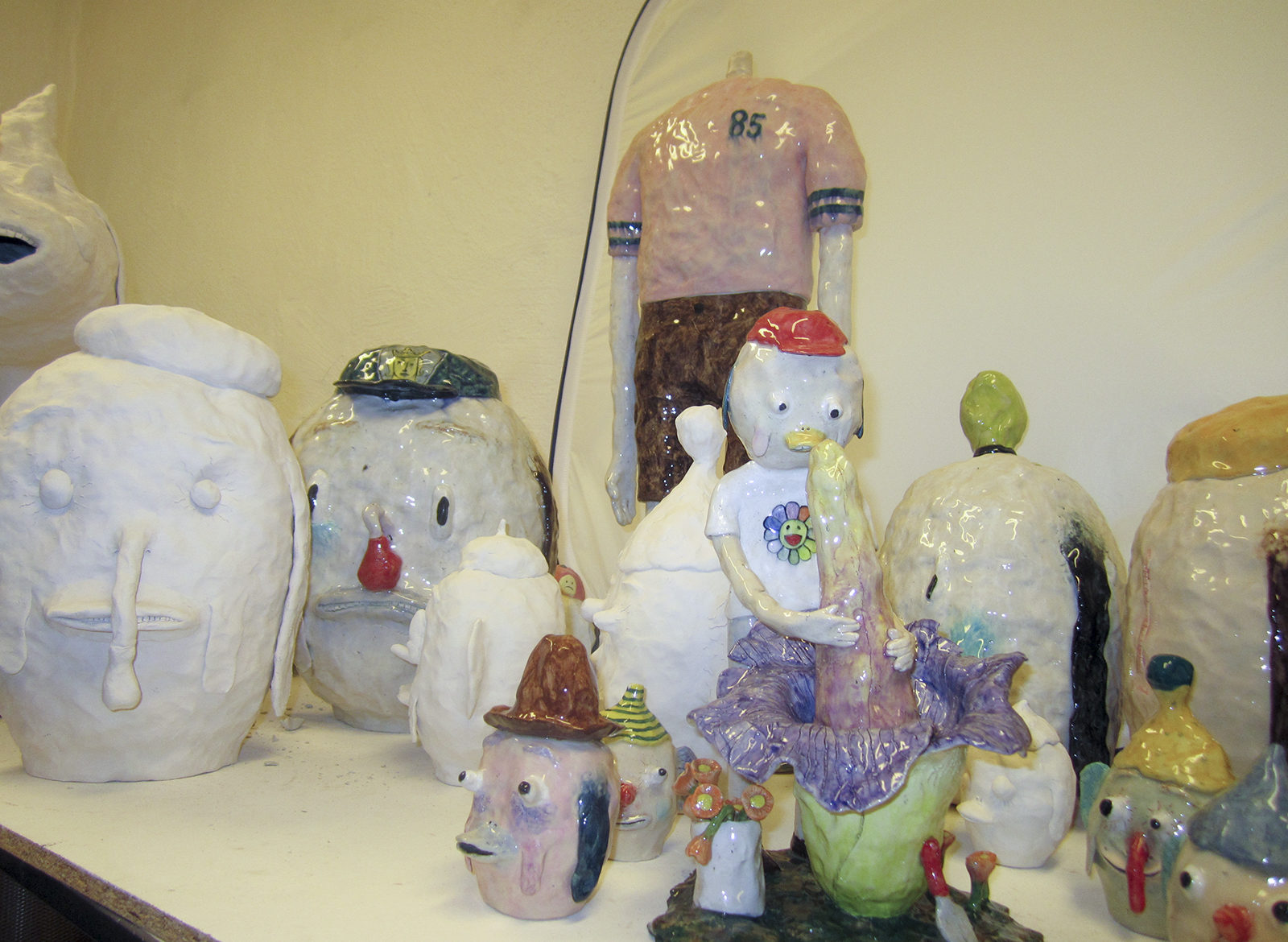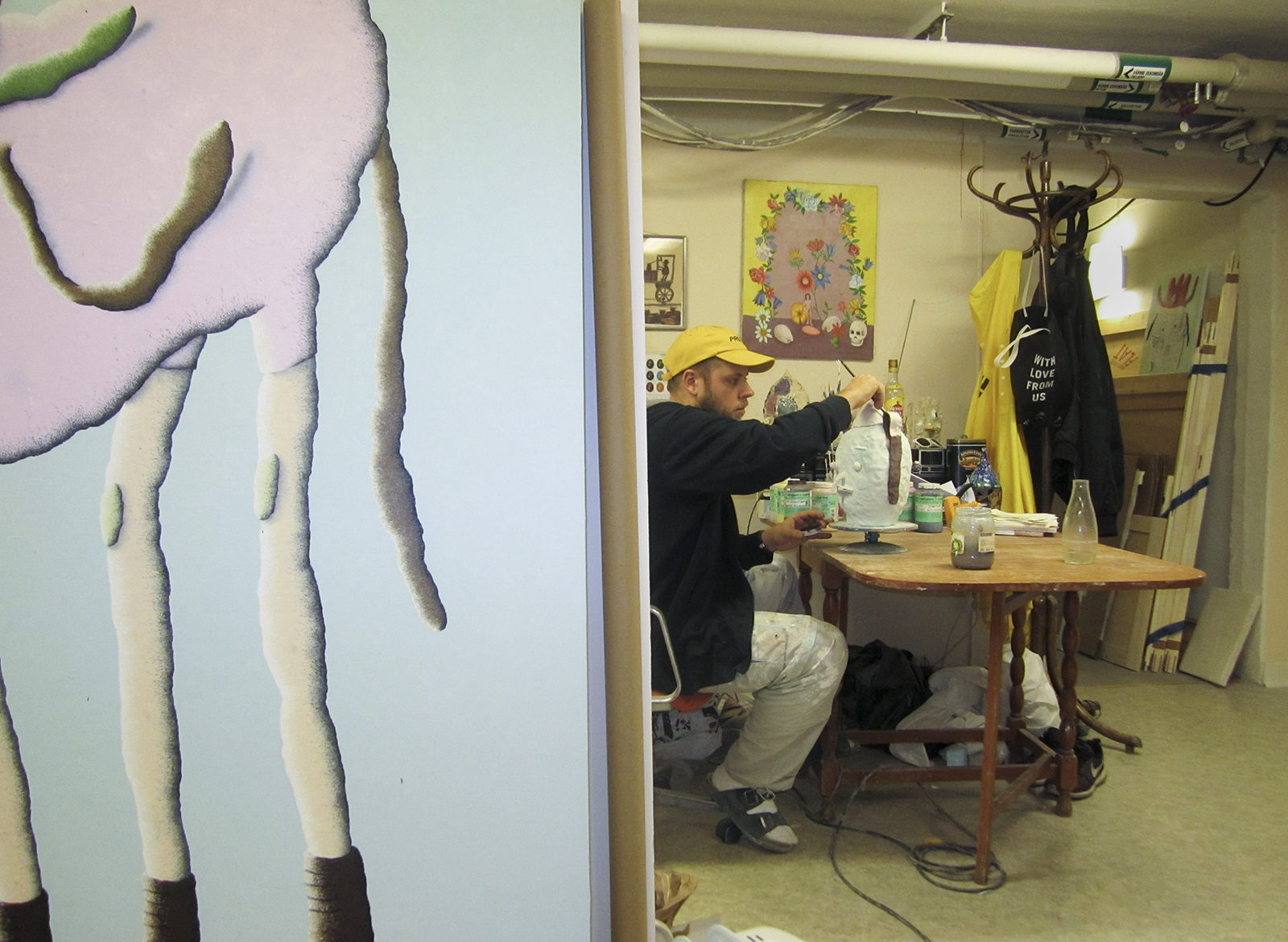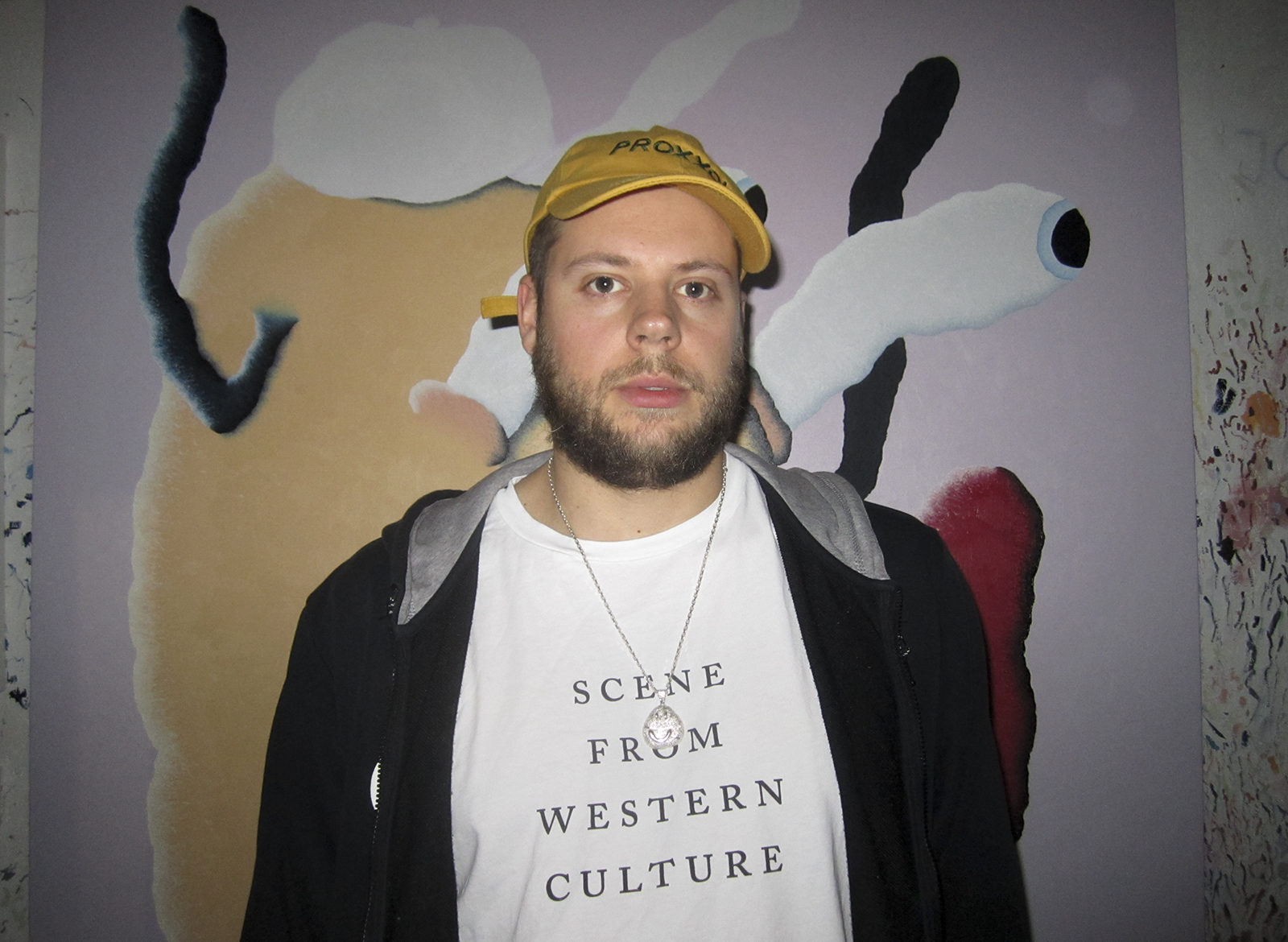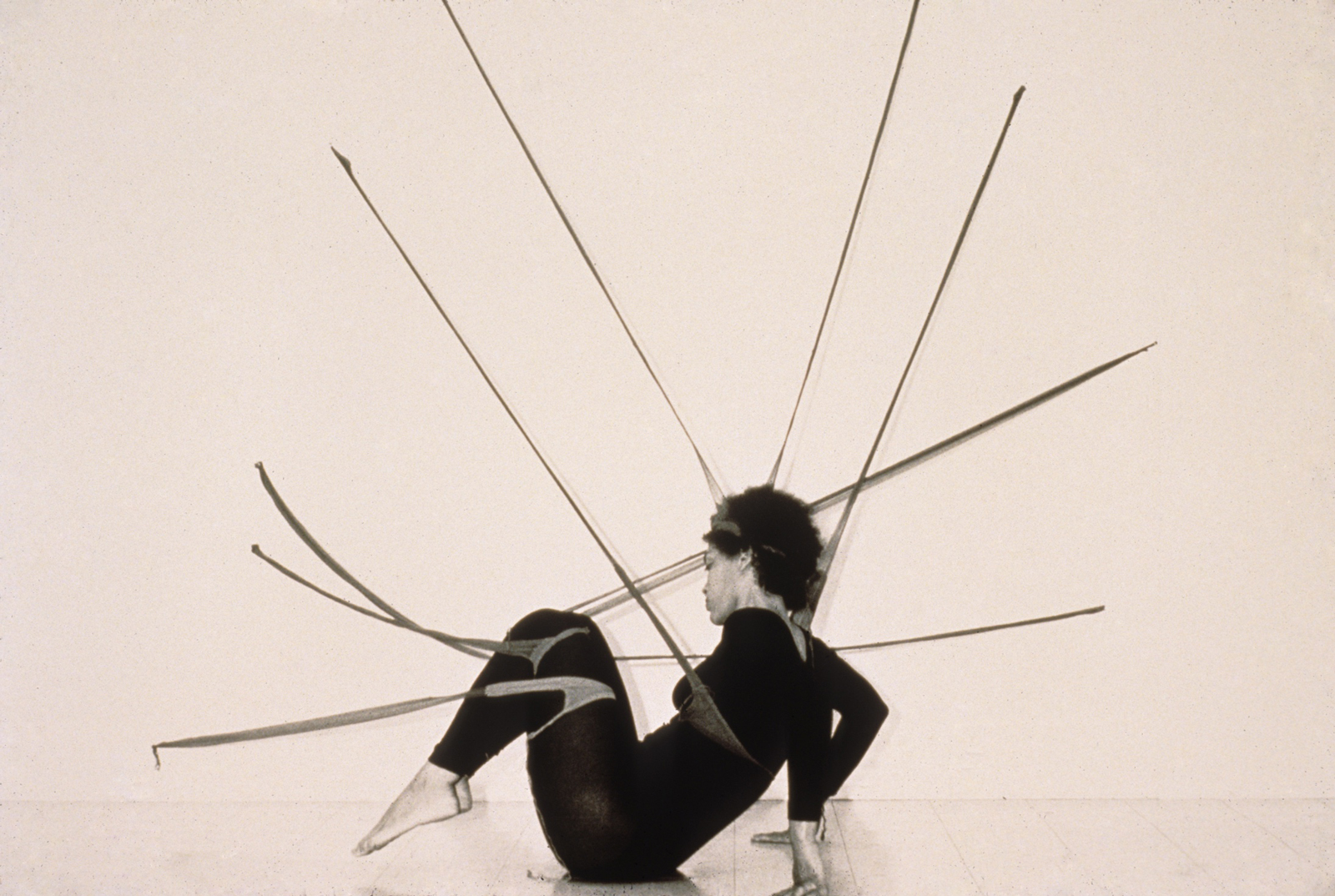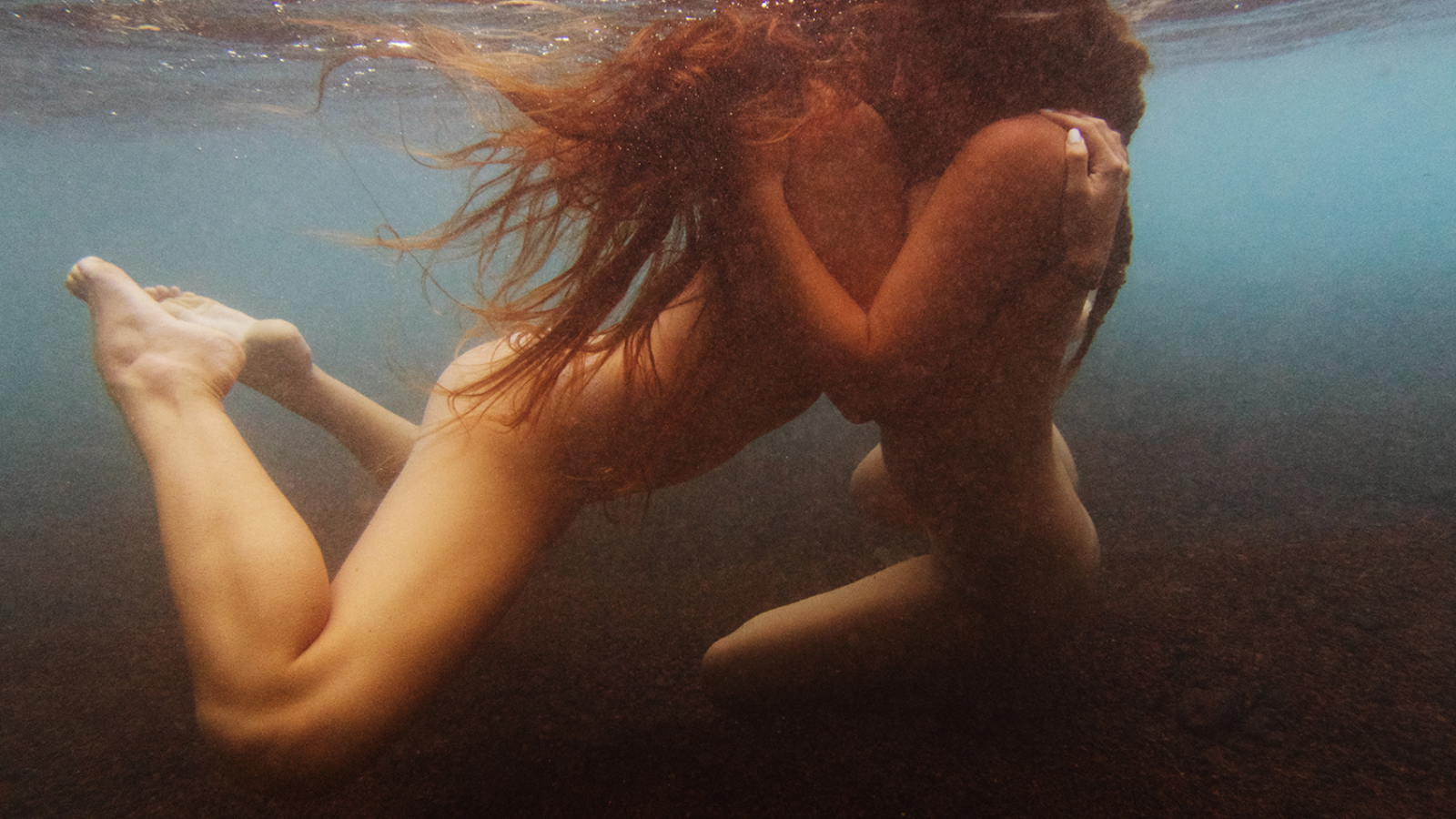Interview and Photo: Matilda Dahlgren
Images Courtesy of Tennis Elbow
We recently covered Joakim Ojanen’s show with Ryan Travis Christian at the Hole. It was a really fun almost insouciant show that was also pregnant with the portent of something darker. That mood is confirmed by Ojanen in our interview with him where he describes his sculptures as both funny and sad and lost at the same time. These layers of depth are again on display in Ojanen’s solo exhibition in the Journal Gallery’s Tennis Elbow space.
The show at Tennis Elbow features specially selected absurdist busts. It’s a great way to catch up on Ojanen’s work if you missed him at the Hole, if you want to brush up on his work before his upcoming show in Cologne or before he blows up in general.
Our foreign correspondent Matilda Dahlgren met up with Ojanen in their native Sweden for the interview below.
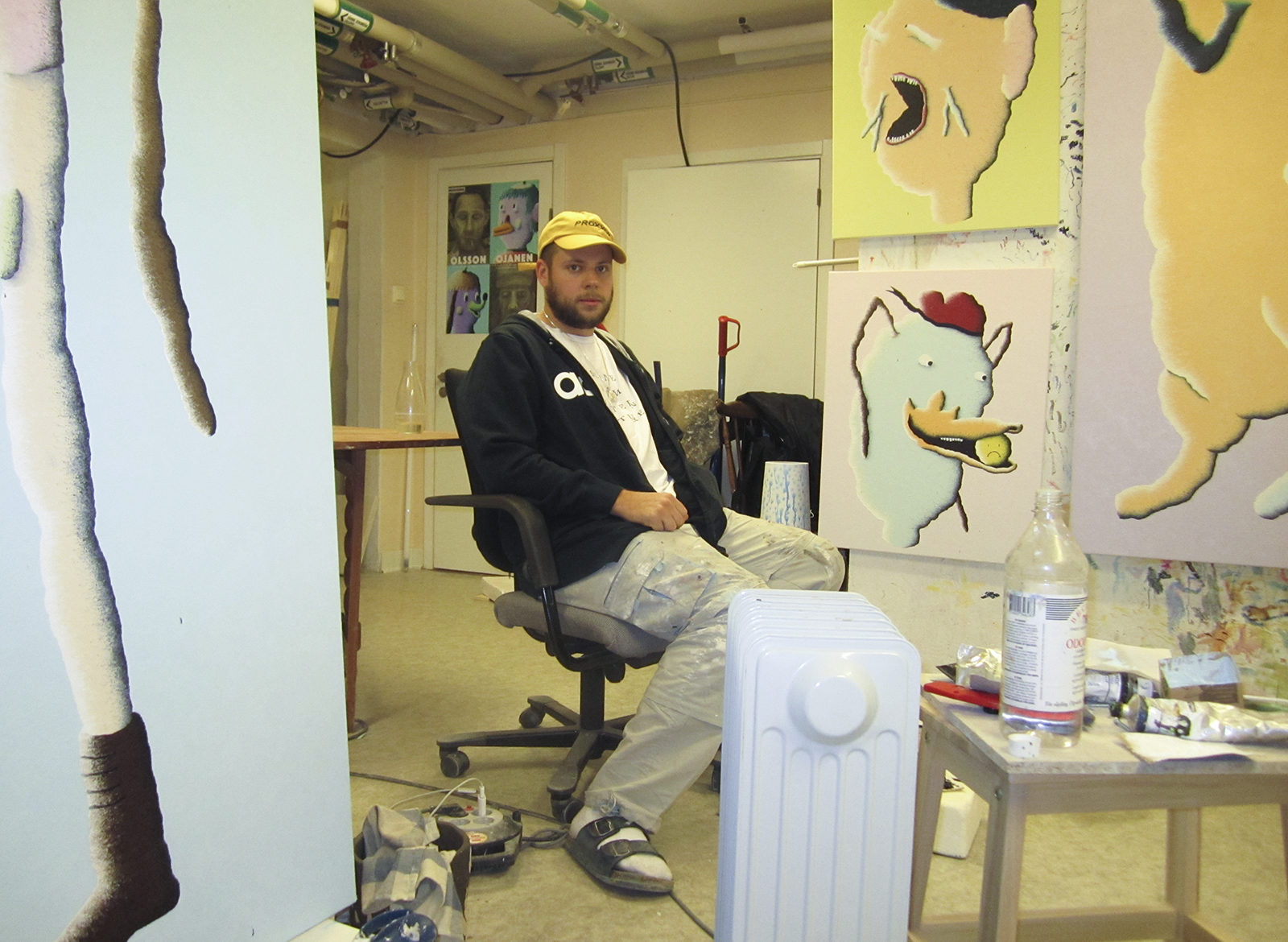
Tell me about your exhibition at the Journal Gallery Project space, Tennis Elbow?
I showed five ceramic head sculptures in various sizes. Normally I plan my shows quite a while before but this time I got asked to do the show a couple of months before the opening. I have a big show planned in Cologne, Germany in December which I’m working on right now and have to spend all my time on. It was still cool to do the show at The Journal; I like their gallery a lot. I gathered some already existing sculptures in my studio, which I think worked well together, and shipped them over there.
Tell me about your relationship with ceramics. How did it start? Was it love at first sight?
It was during my studies and me and my classmate Karin Hagen were looking for a hobby. She found an open ceramic studio and we started to spend time there. In the beginning, I didn’t like the clay at all. I had a hard time getting any control over it whatsoever. I made a few ugly pots before I started to try making the characters I was drawing at that time, that was way more fun. I got a little more skilled and after a year or so I decided to buy my own kiln.
Your sculptures have been described as a three-dimensional development of your paintings and drawings. Tell me about the relationship between your ceramic sculptures and your paintings?
It started with the drawings. I did a lot of doodles and just filled up a sketchbook. But I had a hard time making something more with them. I reached a point where I needed to try different mediums to find some sort of satisfaction. The ceramics and the painting came about the same time. I love to have more than one material to work with. When I get tired of one I just switch and work with the other for a while.
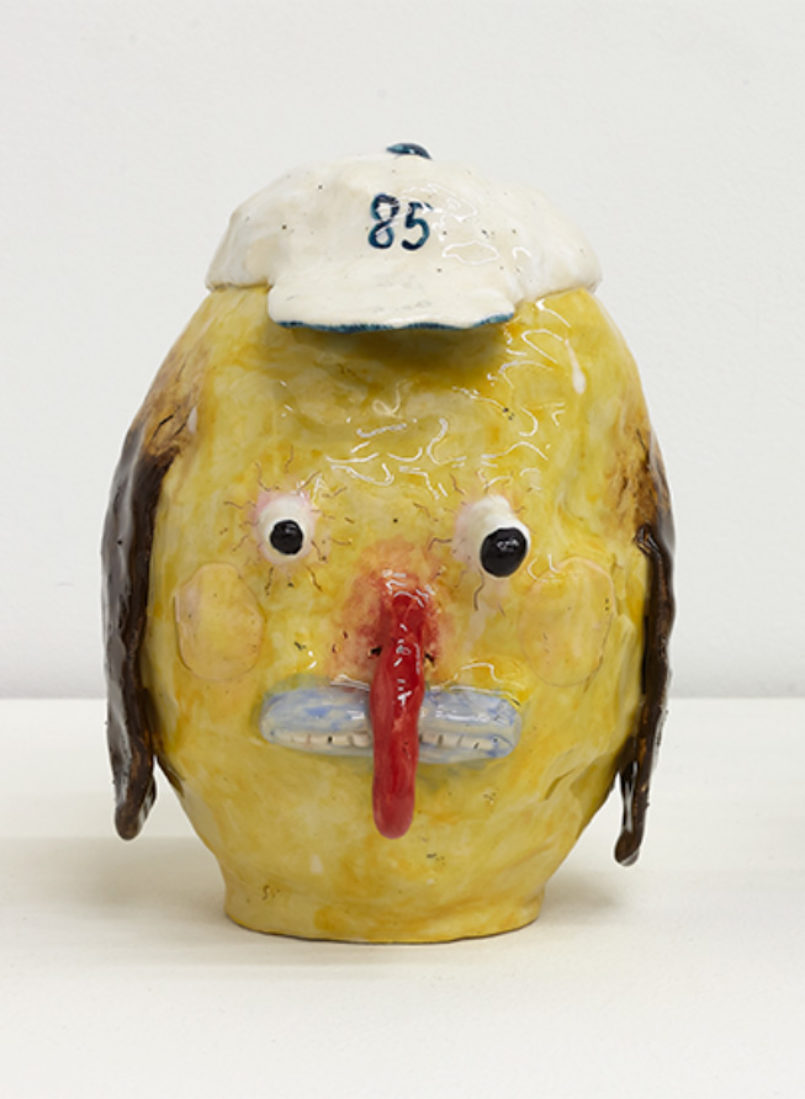
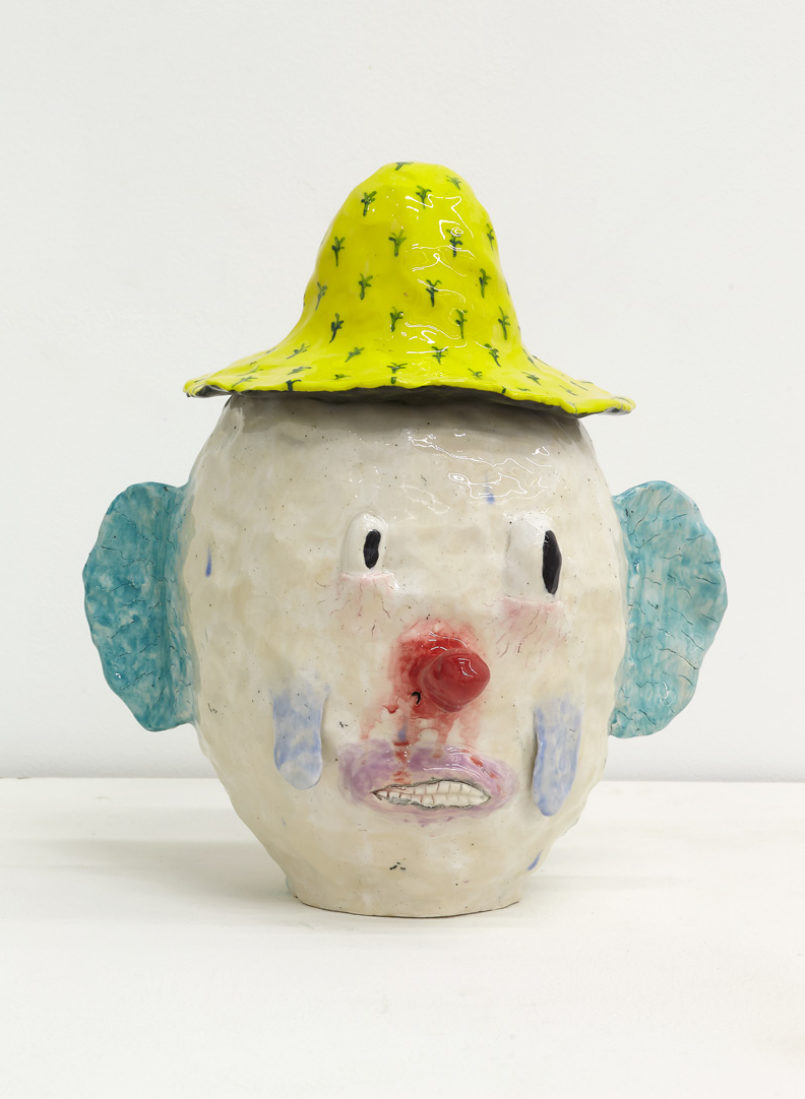
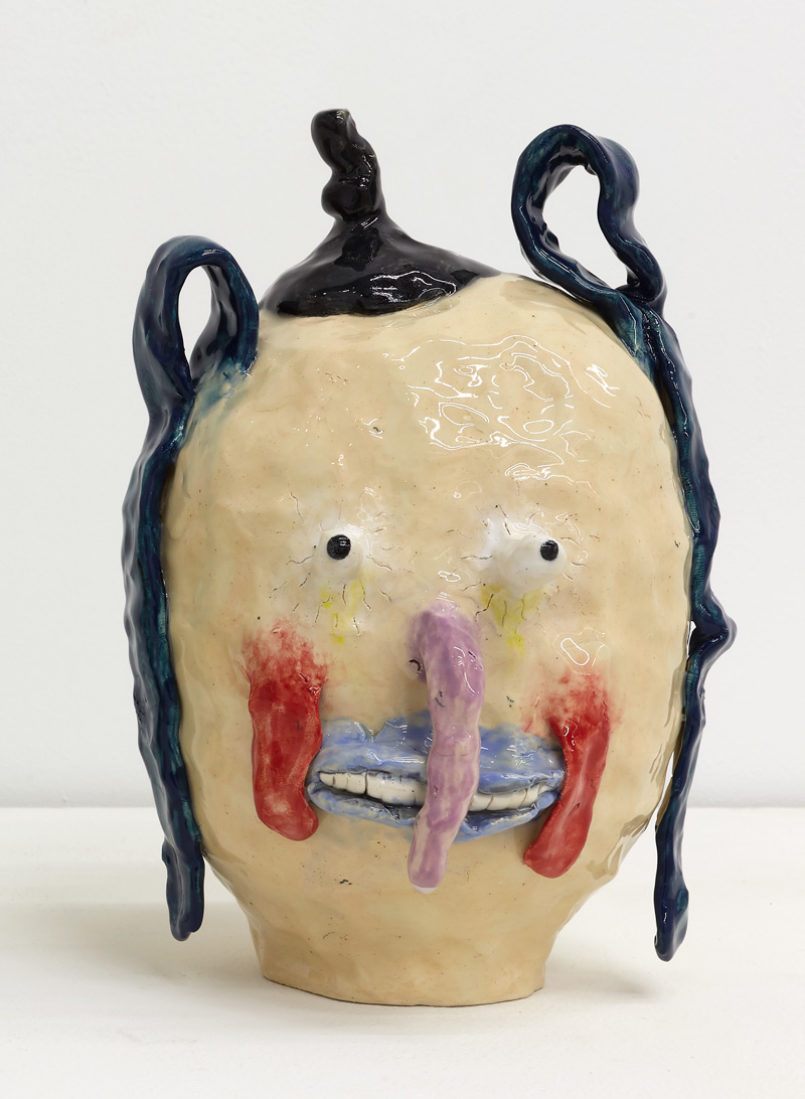
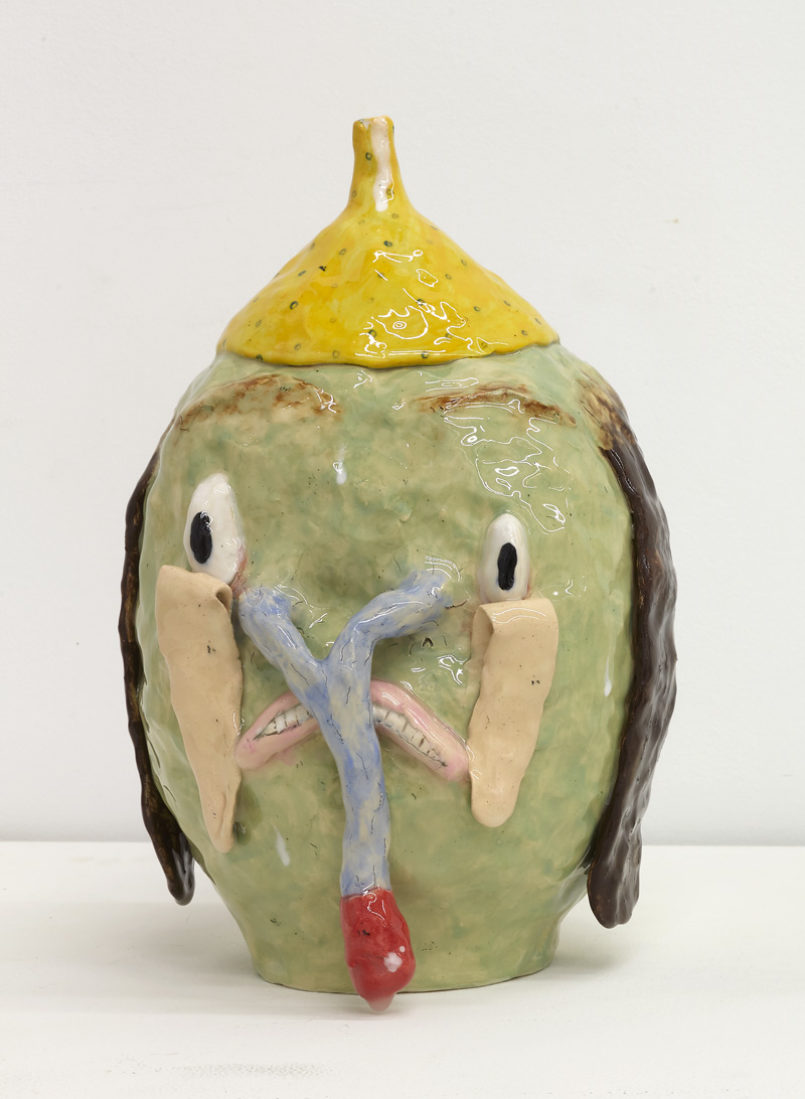
The characters in your paintings and sculptures have been described as “comic”. Is that how you would describe them as well? And who are the characters portrayed in your sculptures? Are some of them self-portraits?
They definitely have a comic side to them, but it’s not all comic. They are usually quite sad or lost. I see them as some kind of self-portraits in one way. I think they represent the feeling of how a soon to be a 32-year old guy from Västerås, Sweden, living in Stockholm, is thinking about life. Hopefully, people with other backgrounds than that can recognize something in them too.
How do you feel about color? How do you differentiate your use of color between your paintings and your sculptures?
I think the color in my paintings has adapted quite a bit to the ceramics, they were a lot darker before. The color in the ceramic pieces is a result of a long hunt for glazes and underglazes that I feel works well for my sculptures. I’m still looking for more colors to add to my palette!
Tell me about your time living in Los Angeles. How did that time affect you as an artist?
In 2016, I worked in LA for three months for my show at Richard Heller Gallery in Santa Monica. I thought it was a nice idea to go over there, see the town and the art scene when I had a show. It was also easier for me to plan the exhibition a bit more and to just focus on that. I shipped some work I made in Stockholm before I went over but most of the work I made over there.
I don’t know if the city affected my art so much, but I needed to find new materials over there to work with. Those affected my work quite a bit I think. I found some nice underglazes there that I still stick with.
I will go back a couple of months next year to work on my second solo show with Richard Heller Gallery, I’m really looking forward to that.
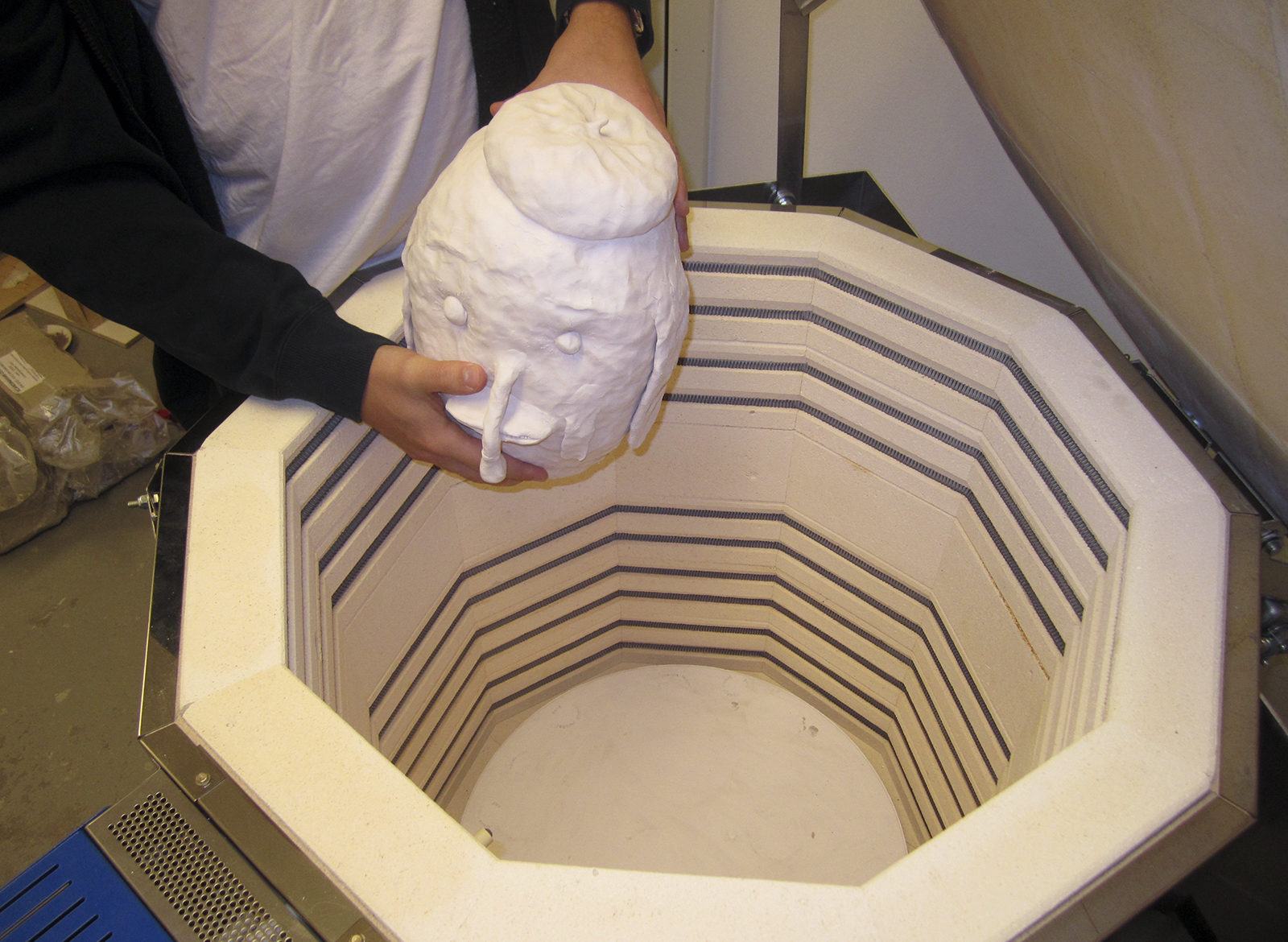
I have a really hard time imagining finished works or exhibitions in my head. I need to try stuff out. Once I tried one thing I get new ideas so I can push things forward a little bit each time.
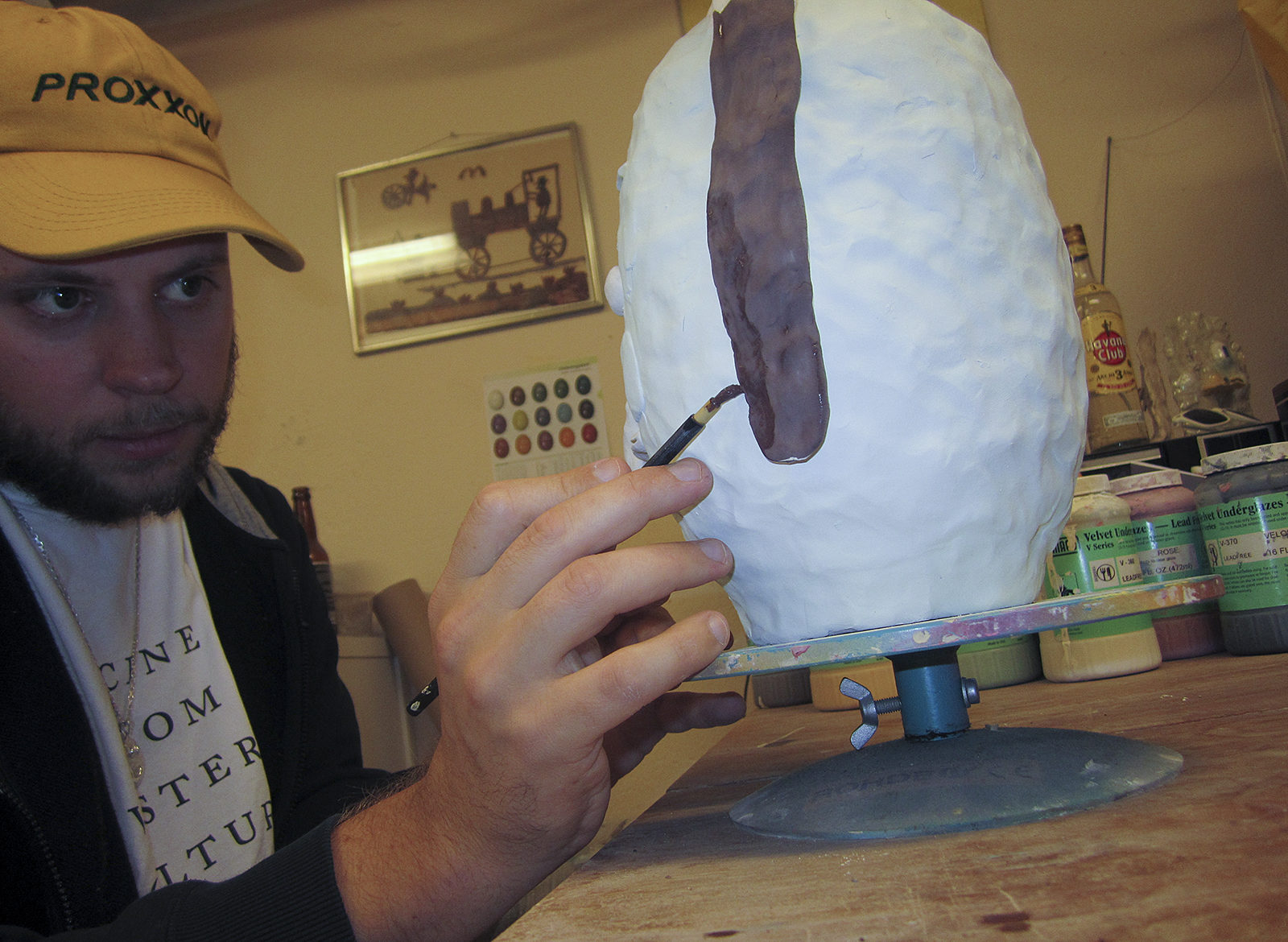
Do you ever feel that your art is misunderstood?
Hm, I don’t really have an agenda for my art. I’m working alone in my studio and work on things I like. It’s always a bit weird to move the work from my private space into a gallery where people can see it and think a lot of different things about it. Some people have really nice interpretations of the works and that can make me happy and also help me to think in new perspectives. But I rarely mind if people dislike my work or have interpretations of it that I can’t see.
You’ve done some group exhibitions in the past. What’s the biggest difference between solo and group exhibitions?
The main difference is that it’s usually someone else that puts it together and decides about placement and how it’s exhibited. I only do group shows that have artists I like and respect. But you put your trust in the curator and hope that they will do a good job. When I work on a solo show I want to have control over how I display it, what kind of plinths/tables, what goes next to what and so on. In a group show, I don’t mind someone else taking the control over all of that.
What does your dream-exhibition look like?
I wish I had a clear idea of what that would look like. I have a really hard time imagining finished works or exhibitions in my head. I need to try stuff out. Once I try one thing I get new ideas so I can push things forward a little bit each time. If I had an answer to this question I would already have made that exhibition.
